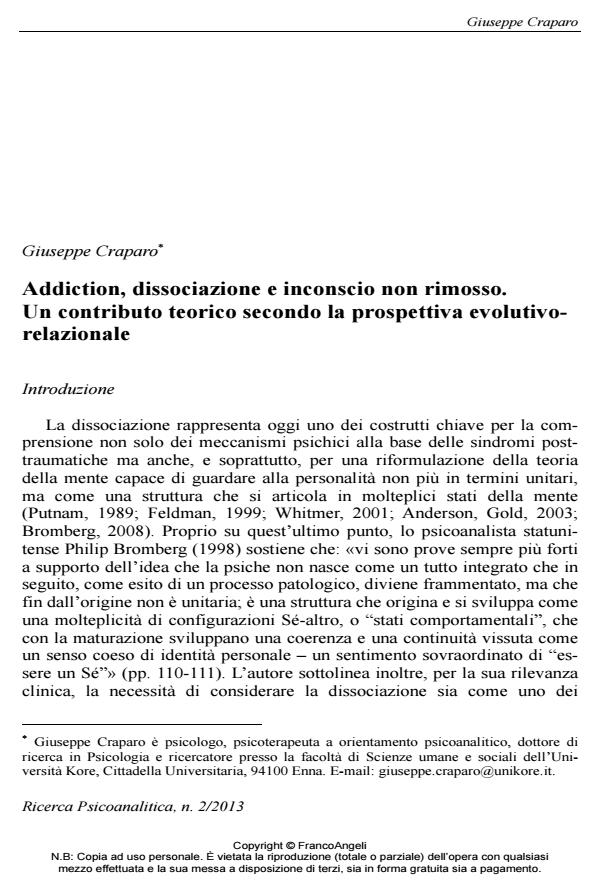Addiction, dissociation and the unrepressed unconscious. a theoretical contribution from a developmental-relational perspective
Journal title RICERCA PSICOANALITICA
Author/s Giuseppe Craparo
Publishing Year 2013 Issue 2013/2
Language Italian Pages 12 P. 73-84 File size 191 KB
DOI 10.3280/RPR2013-002005
DOI is like a bar code for intellectual property: to have more infomation
click here
Below, you can see the article first page
If you want to buy this article in PDF format, you can do it, following the instructions to buy download credits

FrancoAngeli is member of Publishers International Linking Association, Inc (PILA), a not-for-profit association which run the CrossRef service enabling links to and from online scholarly content.
Starting from the theoretical-clinical analysis of the pathological dissociation implied in addictions, the author suggests a new view of addictive symptoms (compulsion to assume any substance-object) with the help of the distinction between repressed and non repressed unconscious. The assumption is that in persons affected by an addiction (from sex to the Internet, to psychotropic substances to food, etc.), the dissociative nature of compulsive behaviours is associated to an alteration of the unrepressed unconscious caused by traumatic relational experiences suffered early on in life.
Keywords: Addiction, dissociation, unrepressed unconscious, repressed unconscious, trauma, repression
Giuseppe Craparo, Addiction, dissociazione e inconscio non rimosso. Un contributo teorico secondo la prospettiva evolutivorelazionale in "RICERCA PSICOANALITICA" 2/2013, pp 73-84, DOI: 10.3280/RPR2013-002005